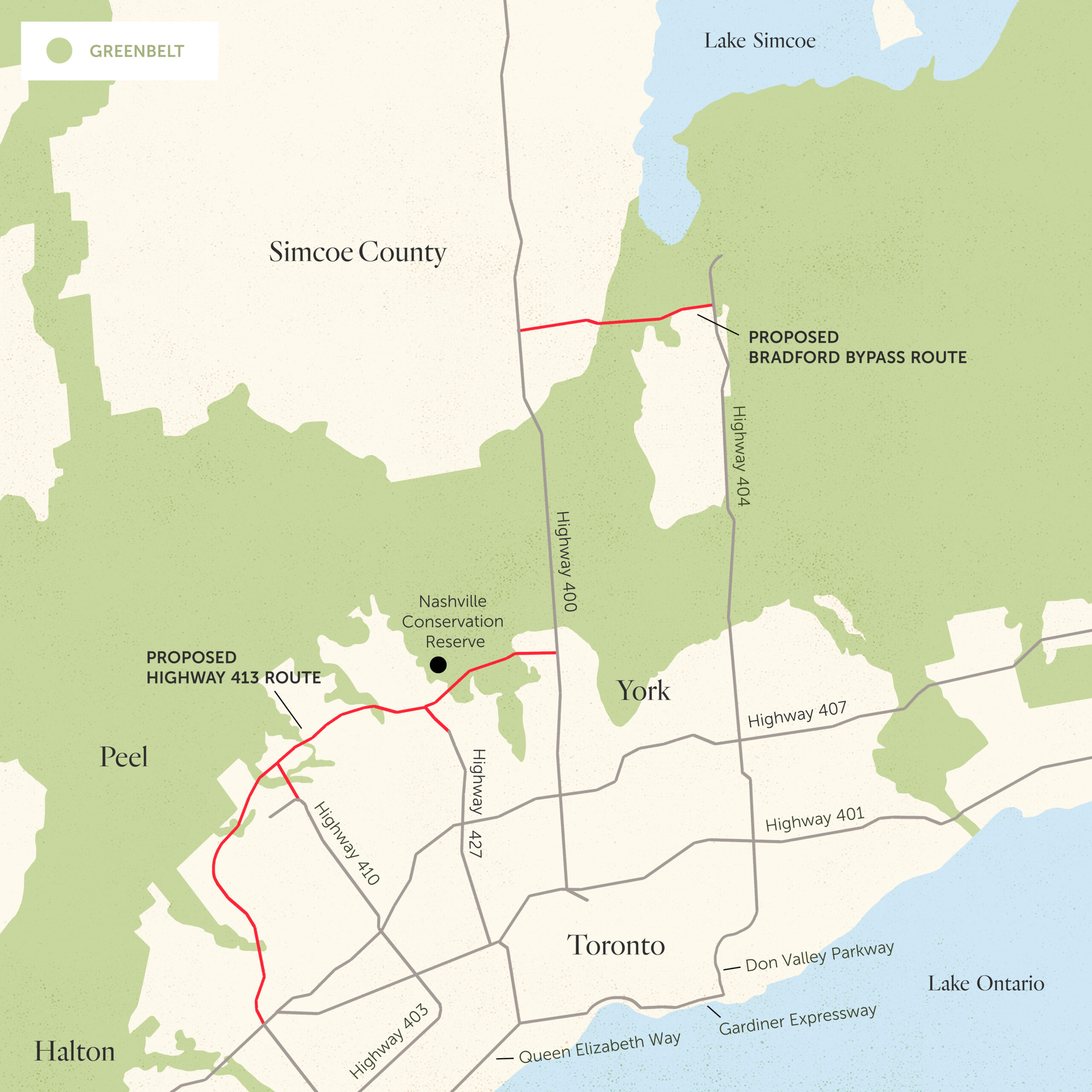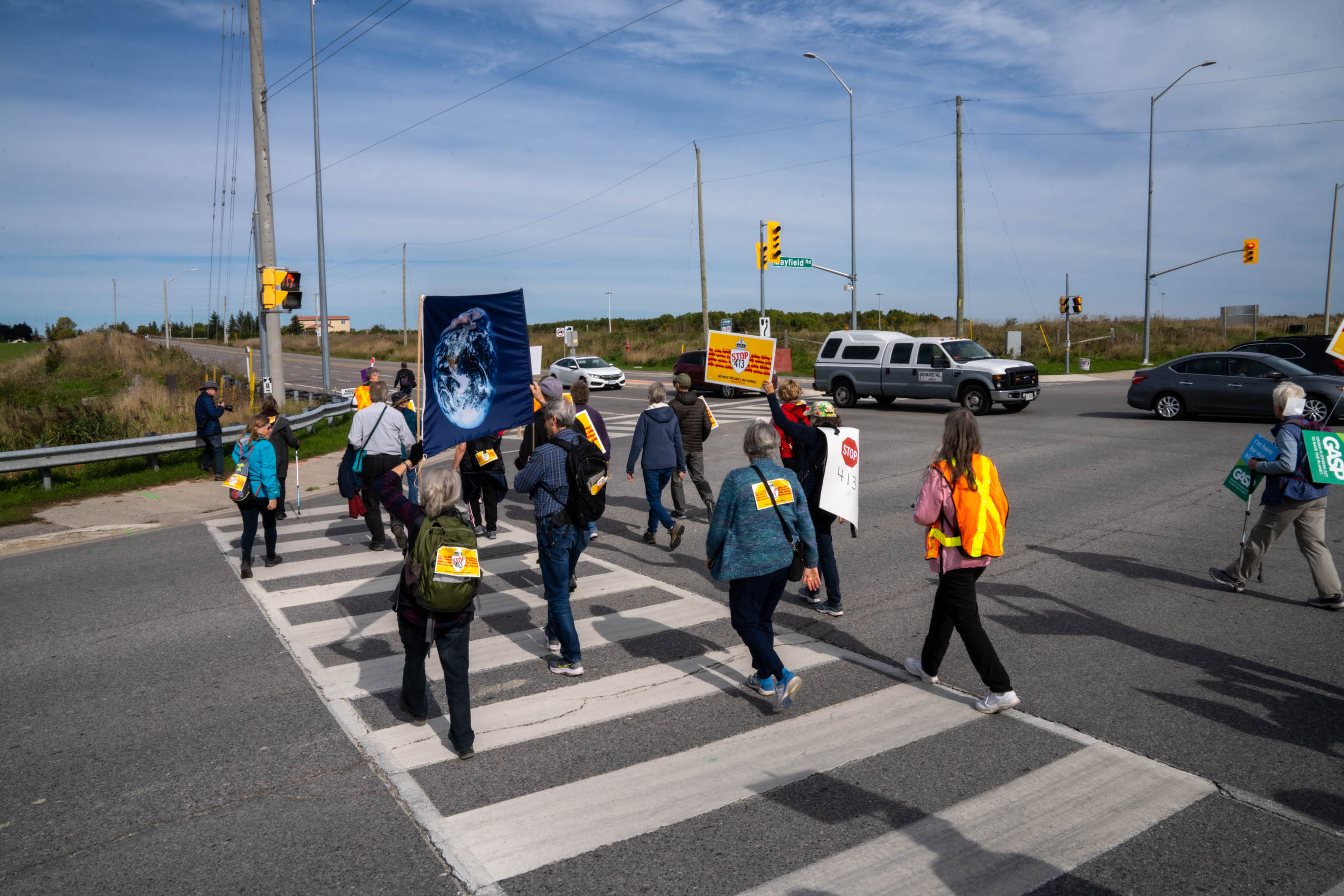
Water determines the Great Lakes Region’s economic future
Climate change, geopolitics and business opportunities power a blue economy
Get the inside scoop on The Narwhal’s environment and climate reporting by signing up for our free newsletter.
An environmental group has made a formal request for the federal government to intervene in Ontario’s Highway 413, throwing the project’s fate into uncertainty a second time.
The charity Environmental Defence made the ask Monday, hours after Premier Doug Ford’s Progressive Conservatives introduced a bill meant to fast-track construction of the controversial highway.
“This legislation makes it even more urgent than it was for the federal government to intervene,” Phil Pothen of Environmental Defence told The Narwhal.
Canadian Environment Minister Steven Guilbeault is mandated by federal law to reply within 90 days — by Jan. 19, 2025, at the latest. If he decides to subject the project to a second review, called an impact assessment, the project could once again be caught in bureaucratic gridlock.
All of this has already happened once before: the federal government originally decided to review Highway 413 in May 2021. At the time, Guilbeault’s predecessor, Jonathan Wilkinson, cited public concern about the project, and raised red flags about how its construction could impact three federally protected species at risk. The highway would cut across Ontario’s Greenbelt, along with wetlands, rivers, forests and prime farmland in Toronto’s outer suburbs.
That review effectively stalled Highway 413 for three years as the Ontario government worked on the initial report needed to kick off the impact assessment process. The province filed drafts — some of which were obtained by The Narwhal through access to information, along with the federal government’s feedback — but never submitted a final version. Last fall, the Supreme Court of Canada upended it all, ruling the law guiding federal impact assessments was “unconstitutional in part,” a decision prompted by a challenge from Alberta.
This created an opening for Ontario to file a challenge of its own. In April 2024, the federal government agreed to drop the review of Highway 413 rather than risk another loss in court. It also created a working group with the province, aimed at resolving some of the concerns at play in the impact assessment.
Ever since, Ontario Transportation Minister Prabmeet Sarkaria has vowed to push forward with the highway at all costs, arguing it will ease the Greater Toronto Area’s traffic congestion — despite decades of evidence showing new highways don’t clear gridlock. Some estimates for the project indicate it could cost up to $10 billion, though the Progressive Conservatives have refused to put a price tag on it.

The province’s first bill of the fall legislative session, introduced Monday, was aimed at fast-tracking Highway 413 ahead of what Premier Ford has hinted could be an early election.
If passed, the bill would exempt the project from undergoing a full provincial environmental assessment, Ontario’s equivalent to the federal impact assessment. Instead, the province is proposing an “accelerated” process, which would require a more limited review of the highway’s environmental impacts, and allow the government to start early works like bridges before completing it.
The new bill, dubbed the Reducing Gridlock, Saving You Time Act, would also permit round-the-clock construction work on the 413, and allow the province to expropriate land for the highway faster.
“We will do anything and everything to get this highway built,” Sarkaria told reporters at Queen’s Park Monday.
Environmental Defence pointed to the new bill in its 22-page letter to Guilbeault Monday, arguing Highway 413 still has many of the same problems that led the federal government to intervene in 2021. Environmental Defence was also behind the first request for the federal government to review Highway 413, and has been pushing Guilbeault for months to take another look at the project.
Technically, Guilbeault is capable of subjecting Highway 413 to a new review — the federal government updated its impact assessment legislation in June in an attempt to comply with the Supreme Court ruling. But there was a lot of uncertainty in the ruling itself, meaning lawyers and legal scholars weren’t completely clear on its meaning and the issue could eventually end up in court again.



Guilbeault’s office didn’t respond to questions about whether he would grant the request. If he does, the move would reignite a years-long feud between the federal and provincial governments over the project. Federal impact assessments have a stricter set of environmental standards than Ontario’s rules require, and the process could delay the project or stop it entirely.
In a statement sent after this article was published, the Impact Assessment Agency of Canada said new requests for review “will be assessed on a case-by-case basis,” and Ontario’s new bill won’t affect the Highway 413 federal-provincial working group.
Sarkaria’s office didn’t answer The Narwhal’s request for comment. Asked about the risk of federal intervention earlier in the day, before Environmental Defence sent its letter to Guilbeault, Sarkaria told reporters he hopes the federal minister “stays out of the provincial lane on this.”
“There’s no more delays that we can see from the federal government on this project,” he said.
Updated Oct. 23, 2024, at 3:45 p.m. ET: This story was updated to include comment from the Impact Assessment Agency of Canada.
Get the inside scoop on The Narwhal’s environment and climate reporting by signing up for our free newsletter. On a warm September evening nearly 15...
Continue reading
Climate change, geopolitics and business opportunities power a blue economy

10 billion litres of sewage are dumped into Winnipeg’s lakes and rivers each year. Some...

Court sides with Xatśūll First Nation, temporarily halting Mount Polley mine waste expansion
